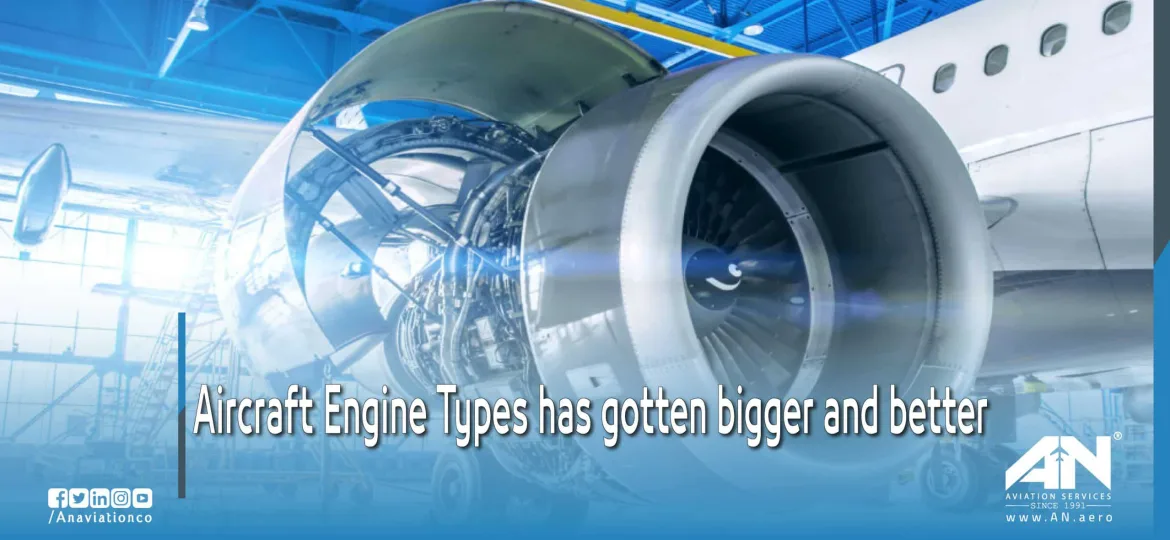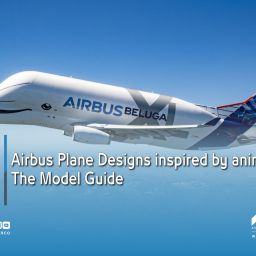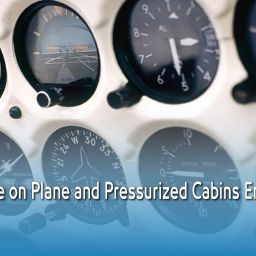
The evolution of aircraft engine technology over the decades is a testament to human ingenuity and the unrelenting quest for efficiency, speed, and sustainability in aviation. As the demands of commercial aviation and powered aircraft continue to rise, so too does the need for engines that are not only more powerful but also more efficient and environmentally friendly. From the roaring days of early jet engines to the whisper-quiet efficiency of modern turbofan designs, aircraft engine types have transformed dramatically, leading to safer, faster, and more fuel-efficient air travel.
In this blog, we’ll explore the main types of aircraft engines, their advancements, and how they’ve evolved to meet the needs of high altitudes, supersonic speeds, and fuel efficiency.
Understanding Aircraft Engine Types
The heart of any aircraft lies in its engine, a sophisticated machine designed to generate the thrust needed to lift tons of metal and passengers into the air. Over time, various engine types have been developed, each with its specific strengths and applications. Let’s break down the most common types:
1. Turbojet Engine: The Foundation of Jet Travel
The turbojet engine was one of the first types of jet engines to revolutionize aviation. Its design is relatively straightforward: air enters through an intake, gets compressed, passes through combustion chambers, and exits as high-speed exhaust gases, creating thrust.
Turbojet engines are ideal for high speeds and supersonic flight because of their ability to operate efficiently at such velocities. However, they tend to be less fuel-efficient at lower speeds, making them less suitable for modern commercial aviation.
2. Turbofan Engines: The Modern Standard
Today’s commercial aircraft, from narrow-body jets to massive wide-body planes, rely primarily on turbofan engines. These engines have a large bypass air system, which channels most of the airflow around the engine core rather than through it. This results in quieter operation, reduced fuel consumption, and greater efficiency.
Turbofan engines are a type of gas turbine engine and are ideal for high altitudes and long-haul flights. With their ability to balance thrust and efficiency, they’ve become the go-to choice for commercial aviation.
3. Turboprop Engines: Efficiency at Lower Speeds
The turboprop engine is another variation of the gas turbine engine, but instead of relying solely on jet thrust, it uses a propeller to generate thrust. This makes turboprops especially effective for shorter flights and regional air transport.
Turboprops excel at lower speeds and altitudes, offering exceptional fuel efficiency. They’re frequently used in regional airliners and smaller planes, particularly on routes where speed isn’t as critical as operating cost.
4. Turboshaft Engines: Powering Helicopters:
While not used in traditional airplanes, turboshaft engines deserve mention for their significant role in powering helicopters. They’re optimized for providing rotary motion rather than linear thrust, making them indispensable in vertical-lift operations.
5. Ramjet and Scramjet Engines: Pushing the Boundaries:
For those eyeing supersonic speeds and beyond, ramjets and scramjets are the cutting-edge technologies pushing the limits of what’s possible. These engines are designed for hypersonic travel and do not require rotating compressors, instead relying on the high-speed motion of the aircraft itself to compress incoming air.
Key Components of Aircraft Engines
While the designs vary, most aircraft engines share a few critical components that enable their operation:
- Engine Core: The central part where compression, combustion, and turbine stages occur.
- Combustion Chambers: Where air mixes with fuel and ignites, producing the high-energy gases needed to generate thrust.
- Bypass Air: In turbofan engines, this refers to the air that bypasses the engine core, contributing to thrust while improving efficiency and reducing noise.
- High-Pressure Systems: Critical in compressing incoming air to maximize energy output.
- Turbine Systems: Extract energy from exhaust gases to power the compressor and fan blades.
How Engines Have Gotten Bigger and Better?
Over the decades, aircraft engine types have seen dramatic improvements, especially in terms of size, efficiency, and capability. Here are some of the major ways they’ve evolved:
1. Increased Thrust:
Modern engines, such as the GE9X used in the Boeing 777X, produce unparalleled levels of thrust. These massive engines are designed to power wide-body aircraft over long distances while carrying hundreds of passengers.
2. Enhanced Fuel Efficiency:
One of the most critical advancements has been in fuel consumption. Innovations in materials, aerodynamics, and engine core design have led to engines that use less fuel per mile, reducing the carbon footprint of air travel.
3. Quieter Operation:
Noise pollution has long been a concern in aviation, particularly near airports. Modern turbofan engines, with their advanced bypass air systems, are significantly quieter than earlier models, making air travel less disruptive to communities.
4. Adaptation to High Altitudes:
As planes fly at high altitudes, engines must perform reliably in thinner air. Modern engines are designed to maintain efficiency and thrust even in these challenging conditions.
5. Reliability and Durability:
Today’s engines are more reliable and require less maintenance than their predecessors. Advances in materials science, such as heat-resistant alloys and composite materials, have made engines both lighter and more durable.
Fuel Efficiency: A Growing Priority
As the aviation industry grapples with its environmental impact, fuel efficiency has become a top priority. Modern turbine engines are designed to burn less fuel while still providing the power needed for high speeds and long-haul flights. Additionally, efforts to incorporate sustainable aviation fuels (SAF) into engine systems promise to further reduce the industry’s reliance on traditional fossil fuels.
The Future of Aircraft Engines
Looking ahead, the aviation industry is exploring next-generation engine technologies that promise even greater advancements:
- Electric and Hybrid Engines: Electric propulsion systems, while still in their infancy, could revolutionize regional and short-haul air travel, offering zero-emission solutions.
- Hydrogen-Powered Engines: Hydrogen fuel is being touted as a potential game-changer for aviation, with the promise of clean, abundant energy.
- Supersonic and Hypersonic Engines: With companies like Boom Supersonic aiming to bring supersonic speeds back to commercial aviation, engines capable of handling extreme velocities will be key.
- Smaller, Smarter Engines: Advances in artificial intelligence (AI) and data analytics are enabling smarter engines that can monitor their own performance and anticipate maintenance needs, reducing costs and improving reliability.
Conclusion
From the early days of turbojet engines to today’s highly efficient turbofan engines, the evolution of aircraft engine types has been nothing short of extraordinary. These innovations not only make air travel faster and more reliable but also address critical concerns like noise, efficiency, and environmental impact.
As the aviation industry continues to push the boundaries of what’s possible, we can expect engines to become even bigger, better, and greener, shaping the future of air travel for decades to come.



